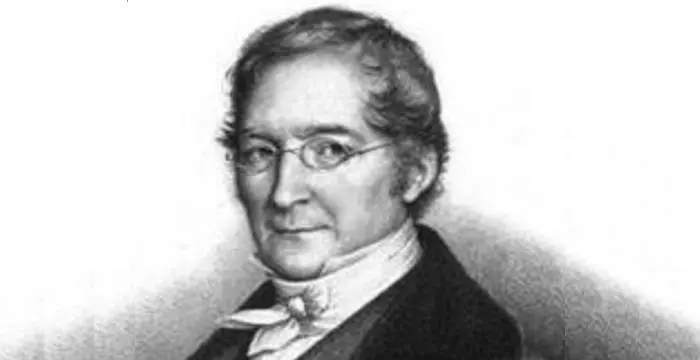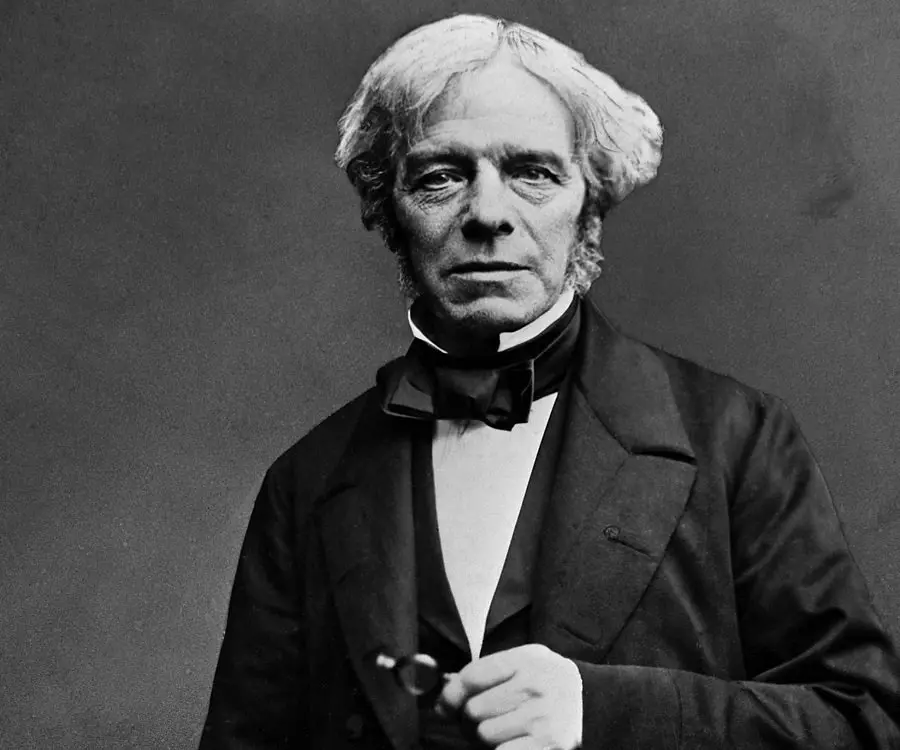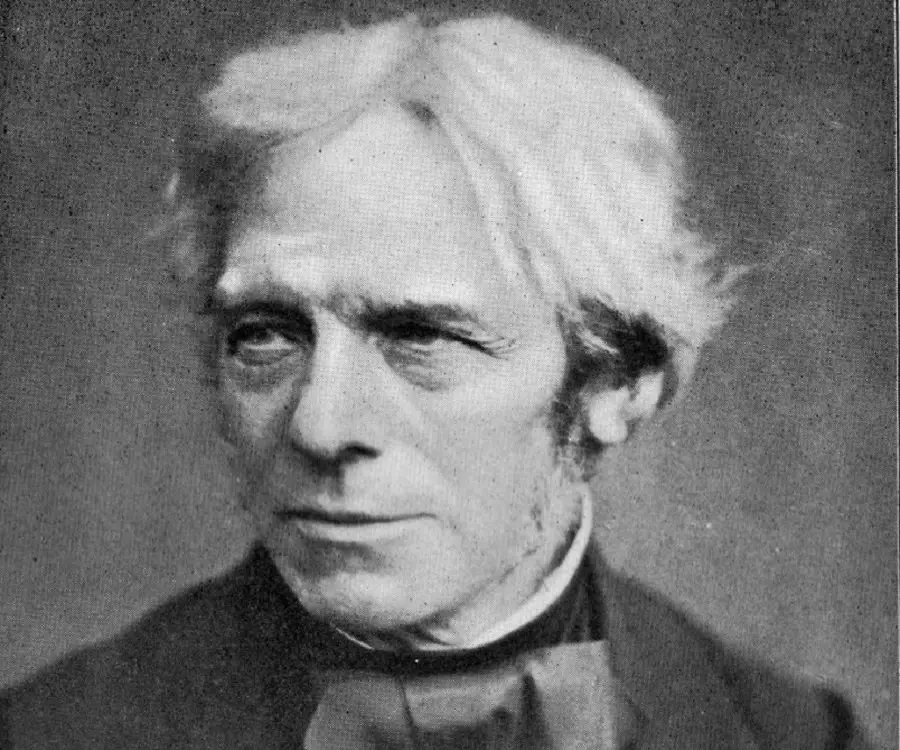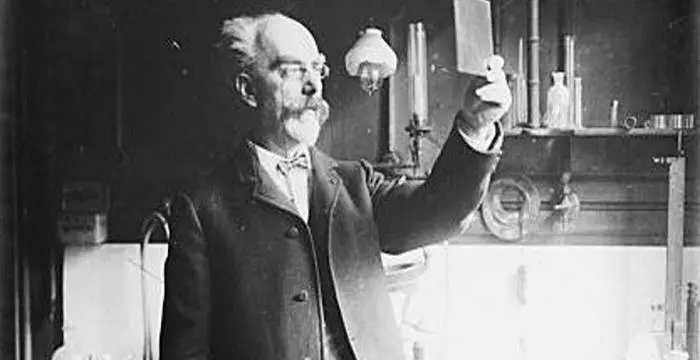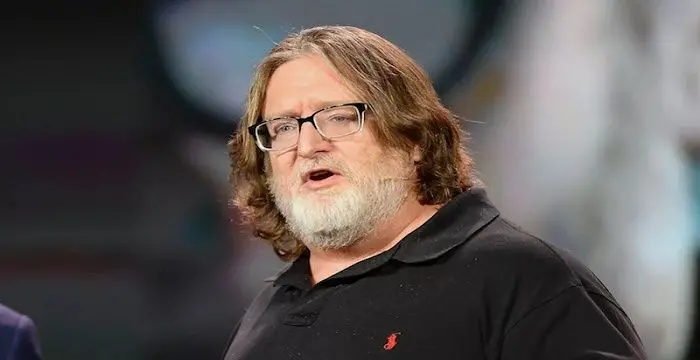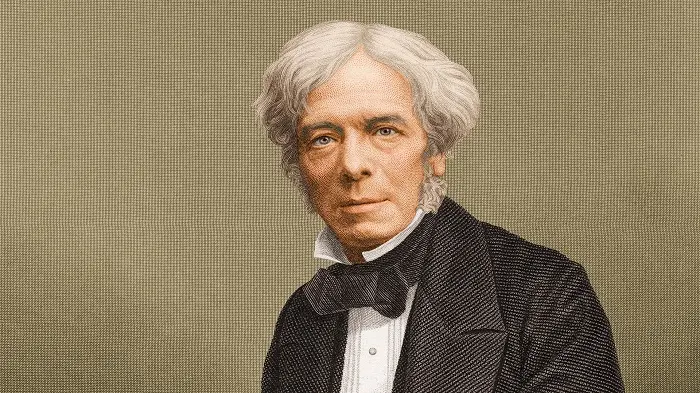
Michael Faraday - Physicists, Family and Life
Michael Faraday's Personal Details
Michael Faraday was the most celebrated British scientist of the 19th century
| Information | Detail |
|---|---|
| Birthday | September 22, 1791 |
| Died on | August 25, 1867 |
| Nationality | British |
| Famous | Scientists, Physicists, Chemists, Chemists, Physicists |
| Spouses | Sarah Barnard |
| Discoveries / Inventions |
|
| Birth Place | Newington Butts |
| Religion | Presbyterianism |
| Gender | Male |
| Father | James Faraday |
| Mother | Margaret Hastwell |
| Sun Sign | Virgo |
| Born in | Newington Butts |
| Famous as | Physicist & Chemist |
| Died at Age | 75 |
// Famous Chemists
Walter Kohn
Nobel Laureate Walter Kohn was an Austrian-born American theoretical chemist and physicist. Check out this biography to know about his childhood, life, achievements, works & timeline.
Amedeo Avogadro
Amedeo Avogadro was an Italian scientist who formulated what is now known as Avogadro's law. This biography of Amedeo Avogadro provides detailed information about his childhood, life, achievements, works & timeline.
Louis Pasteur
Louis Pasteur was a French chemist and microbiologist who developed the first vaccines for rabies and anthrax. This biography of Louis Pasteur provides detailed information about his childhood, life, achievements, works & timeline.
Michael Faraday's photo
Who is Michael Faraday?
Michael Faraday was one of the most prolific scientists of the 19th century. A British physicist and chemist, Faraday is best known for his discoveries of electromagnetic induction and the laws of electrolysis. His biggest breakthrough, however, came with his invention of the electric motor. Faraday is also credited with the invention of the most primitive form of Bunsen burner. Since the early days, the concept of energy, specifically force, interested Faraday the most. It was due to this early reading and experiments with the idea of force that he was able to make important discoveries in electricity later in life. To know more about this British chemist and physicist, read through the following lines.
// Famous Physicists
Walter Kohn
Nobel Laureate Walter Kohn was an Austrian-born American theoretical chemist and physicist. Check out this biography to know about his childhood, life, achievements, works & timeline.
Amedeo Avogadro
Amedeo Avogadro was an Italian scientist who formulated what is now known as Avogadro's law. This biography of Amedeo Avogadro provides detailed information about his childhood, life, achievements, works & timeline.
Gabriel Lippmann
Gabriel Lippmann was a French physicist and inventor. He was awarded the Nobel Prize in Physics in 1908. This biography of Lippmann provides detailed information about his childhood, life, research, achievements and timeline.
Biography detail
Early Life
Born in Newington Butts (today a part of the London Borough of Southwark), Michael Faraday did not come from a very affluent family. His father, James was a member of the Glassite sect of Christianity. Professionally, James was an apprentice to the village blacksmith. Third of the four children, young Michael Faraday received only basic education. In 1804, he served as an errand boy for the bookseller George Riebau, delivering newspapers among other things, who a year later, indentured Faraday for a period of seven years. It was during these seven years of apprenticeship that Faraday read many books, two amongst which that captured his attention like none others were Isaac Watts', The Improvement of the Mind and Jane Marcet’s, Conversations on Chemistry. Not only did this reading activity improve his knowledge and understanding, it also determined his course of life. Faraday’s keen interest in science, especially in electricity, was developed herein.
In 1812, at the end of his apprenticeship Faraday was presented tickets to attend four lectures to be delivered by the eminent professor of chemistry, Humphry Davy and John Tatum, founder of the City Philosophical Society, at the Royal Institution, by William Dance, who was a regular customer at Riebau’s and one of the founders of the Royal Philharmonic Society. Faraday, in an attempt to thank Davy, sent him a three-hundred pages book which contained notes taken during the lecture. Later, Faraday bagged a temporary job as a secretary to Davy, when the latter damaged his eyesight in an accident with nitrogen trichloride. In March 1813, Davy appointed Faraday as Chemical Assistant at the Royal Institution, after John Payne, one of the Royal Institution's assistants, was sacked.
Things, however, weren’t as smooth for Faraday later as they were until then. In the long tour that Davy had set out on, from 1813 until 1815, his valet did not accompany him. As such, Faraday had to fill up for this vacancy. While the tour did open for Faraday the doors to the scientific elite of Europe and exposed him to a host of stimulating ideas, the journey wasn’t a very pleasant one. Biased by classism, Davy’s wife refused to treat Faraday as an equal and made life hell for Faraday, who, worn out by the torture, even thought of giving up on science altogether. In the year 1821, Faraday was appointed as the acting superintendent of the house of the Royal Institution.
Contribution in the Field of Chemistry
Faraday’s earliest contribution to chemistry was while he was working as an assistant to Davy. He was involved in the study of chlorine. Faraday also conducted experiments on the diffusion of gases. Additionally, he succeeded in liquefying several gases, investigating the alloys of steel, and producing several new kinds of glass intended for optical purposes. One of Faraday’s most notable works was invention of the earliest form of Bunsen burner (as we call it today), which is still in use today in the science laboratories around the world as a most suitable source of heat. His extensive work in the field of chemistry can be found out from the fact that he discovered the chemical substance benzene, a chemical compound of carbon and hydrogen. Faraday also discovered two new compounds in chlorine and carbon. While one is used in smoke grenades, the other is employed in the arena of dry cleaning, and spot removing.Faraday is also credited for discovering the laws of electrolysis, and for popularizing terminology such as anode, cathode, electrode, and ion, for which he took the help of William Whewell. It is said that Faraday first reported what we today know as metallic nanoparticles. In 1847, Faraday researched that the optical properties of gold colloids differed from those of the corresponding bulk metal, and it was this discovery which marked the birth of nanoscience.
Contribution in the Field of Electricity & Magnetism
Faraday created a storm in the field of electricity and magnetism with his work. His research in electricity had an enormous influence on the development of mathematics. Faraday’s first success in the field of electricity came when he successfully built the first electric motor. The experiments and inventions that he undertook then, formed the foundation of modern electromagnetic technology.He continued his laboratory work exploring electromagnetic properties of materials and developing requisite experience. In an attempt to find out whether a magnetic field could regulate the flow of a current in an adjacent wire or not, Faraday had set up a circuit but he found no relationship. The next seven years of Faraday’s life was dedicated in the arena of optical quality (heavy) glass, borosilicate of lead, which he used in his future studies connecting light with magnetism.
Two years following Humphry Davy’s death, Faraday got involved in a series of experiments wherein he discovered electromagnetic induction. However, the pinnacle came only when he wrapped two insulated coils of wire around an iron ring, and found that, upon passing a current through one coil, a momentary current was induced in the other coil, a phenomenon which is today known as mutual induction. In later experiments, Faraday discovered that a changing magnetic field produces an electric field. This relation was used by James Clerk Maxwell later and is today one amongst the four Maxwell equations. Faraday, afterwards, used these principles to construct the electric dynamo, the precursor of modern power generators. In the year 1839, Faraday conducted a series of experiments to examine the fundamental nature of electricity. To produce the phenomena of electrostatic attraction, electrolysis and magnetism, Faraday used "static", batteries, and "animal electricity".
When Faraday worked on the theory that electromagnetism flowed into the empty space around a conductor, a concept at the very base of electromechanics, it was first rejected but later approved. However, Faraday did not live to see its acceptance. It was in 1845 that Faraday researched the notionthat many materials display a weak repulsion from a magnetic field which he termed as diamagnetism. Additionally, he also discovered the fact that the plane of polarization of linearly polarized light could be rotated by the application of an external magnetic field aligned in the direction in which the light moved. This phenomenon is today termed as Faraday Effect. During his work on static electricity, Faraday’s experiment displayed that the charge resided only on the exterior of a charged conductor, and exterior charge had no influence on anything enclosed within a conductor. This was due to the fact that the exterior charges redistributed in such a way that the interior fields due to them cancelled. This protective effect is used in what we now know as a Faraday cage.
Later Life
At the Royal Institution of Great Britain, Faraday was elected a member of the Royal Society in 1824. The next year, he was appointed director of the laboratory. Later in 1833, Faraday was bestowed upon with the position, Fullerian Professor of Chemistry, which he was appointed for life. Apart from the scientific researches that Faraday undertook at the Royal Institution, he also worked at numerous other projects given to him by private enterprises and the British government. Faraday spent a considerable amount of time in the construction and operation of light houses. He was also active in what is today known as environmental science. While he aided with the planning and judging of exhibits for the Great Exhibition of 1851 in London, Faraday was also involved in advising the National Gallery on the cleaning and protection of its art collection.
Michael Faraday was deeply involved in the education sector as well. His series of lectures on the chemistry and physics of flames at the Royal Institution is still regarded as one of the earliest Christmas lectures for young minds, a practice that is still prevalent today. Faraday is known to have given Christmas lectures for a record nineteen times between 1827 and 1860. For this accomplishment, the University of Oxford granted Faraday a Doctor of Civil Law degree (honorary) in June 1832. In1838, he was elected a foreign member of the Royal Swedish Academy of Sciences and later in 1844, Faraday became one of eight foreign members elected to the French Academy of Sciences. Meanwhile, in his life, Faraday declined the offer of a knighthood and twice refused the post of the President of the Royal Society which was offered to him. In 1848, Michael Faraday was honoured a grace and favour house in Hampton Court in Middlesex, free of all expenses or upkeep, as a result of representations by the Prince Consort. Ten years later, he retired and lived there.
Personal Life
The wedding bells for Michael Faraday rang on June 12, 1821. His significant other, Sarah Barnard, was the daughter of the Sandemanian silversmith, Edward Barnard. The couple first met through their families at the Sandemanian church. One month post marriage, Faraday confessed his faith to the Sandemanian congregation. He served as deacon and for two terms, as an elder in the meeting house of his youth. His church was located at Paul's Alley in the Barbican. Later, in 1862, the meeting house was relocated to Barnsbury Grove, Islington which was where Faraday served the final two years of his second term as elder before resigning from that post
Death & Legacy
Michael Faraday breathed his last on August 25, 1867 at his house at Hampton Court. He was buried in the dissenters' (non-Anglican) section of Highgate Cemetery, after turning down the burial in Westminster Abbey. Nevertheless, Faraday has a memorial plaque near Newton’s tomb. In order to pay tribute to the works of this great scientist, a statue of Faraday stands in the Savoy Place, London, outside the Institution of Engineering and Technology. London also houses a memorial in the memory of Faraday, which is situated at the Elephant & Castle gyratory system, near Faraday’s birthplace at Newington Butts. Designed by brutalist architect Rodney Gordon, the memorial commemorates Michael Faraday’s importance as a scientist. Walworth, London not only has a small park by the name Faraday Gardens, but also a school which is known as Michael Faraday Primary school. Located on Trinity Buoy Wharf is the Faraday School, where his workshop stands until today above the Chain and Buoy Store, alongside London's only lighthouse.
South Bank University’s electrical engineering department is named the Faraday Wing, due to its proximity to Faraday’s birthplace in Newington Butts. While at the University of Edinburgh's science & engineering campus, an eight-story building is named after Faraday, at Brunel University a recently built hall of accommodation bears his name and so does the main engineering building at Swansea University, a hall at Loughborough University and the instructional and experimental physics building at Northern Illinois University. There are a number of streets in various countries and cities that have been named after this prolific scientist. From 1991 until 2001, Faraday’s picture featured on the reverse of Series E £20 banknotes issued by the Bank of England. The picture showcased him conducting a lecture at the Royal Institution with the magneto-electric spark apparatus.Faraday grabbed the 22nd position in the BBC's list of the 100 Greatest Britons, following a UK-wide vote, which was conducted in the year 2002.
// Famous Physicists
Henry Cavendish
Henry Cavendish was a theoretical chemist and physicist, renowned for discovery of hydrogen and calculation of the mass of earth. To know more about his childhood, profile, timeline and career read on
Walter Kohn
Nobel Laureate Walter Kohn was an Austrian-born American theoretical chemist and physicist. Check out this biography to know about his childhood, life, achievements, works & timeline.
Nikola Tesla
Nikola Tesla was a Serbian-American inventor, best known for his development of alternating current electrical systems. This biography of Nikola Tesla provides detailed information about his childhood, life, achievements, works & timeline.
// Famous Scientists
Juliane Koepcke
Juliane Koepcke is a German-Peruvian biologist, who was the lone survivor among the 92 passengers and crew of the ill-fated LANSA Flight 508 that crashed in the Peruvian rainforest on 24 December 1971. Know more about her life in this biography.
Henry Cavendish
Henry Cavendish was a theoretical chemist and physicist, renowned for discovery of hydrogen and calculation of the mass of earth. To know more about his childhood, profile, timeline and career read on
Konstantin Tsiolkovsky
Konstantin Tsiolkovsky was a Russian rocket scientist and a pioneer of astronautics. This biography provides detailed information about his childhood, family, personal life, career, achievements, etc.
Gabe Newell
Gabe Newell is an American computer programmer and businessman, best known as the co-founder of ‘Valve Corporation.’ This biography provides detailed information about his childhood, family, personal life, career, etc.
Grigori Perelman
Grigori Perelman is a Russian mathematician who is best known for his contributions to Riemannian geometry and geometric topology. Check out this biography to know about his childhood, family life, achievements and fun facts about him.
Eduardo Saverin
Eduardo Luiz Saverin is a Brazilian internet entrepreneur and investor. This biography profiles his childhood, life, career, achievements, and timeline
Michael Faraday's FAQ
What is Michael Faraday birthday?
Michael Faraday was born at 1791-09-22
When was Michael Faraday died?
Michael Faraday was died at 1867-08-25
Where was Michael Faraday died?
Michael Faraday was died in Hampton Court Palace
Which age was Michael Faraday died?
Michael Faraday was died at age 75
Where is Michael Faraday's birth place?
Michael Faraday was born in Newington Butts
What is Michael Faraday nationalities?
Michael Faraday's nationalities is British
Who is Michael Faraday spouses?
Michael Faraday's spouses is Sarah Barnard
What is Michael Faraday's inventions/discoveries?
Electromagnetic Induction, Plane Of Polarization, Benzene was invented (or discovered) by Michael Faraday
What is Michael Faraday's religion?
Michael Faraday's religion is Presbyterianism
Who is Michael Faraday's father?
Michael Faraday's father is James Faraday
Who is Michael Faraday's mother?
Michael Faraday's mother is Margaret Hastwell
What is Michael Faraday's sun sign?
Michael Faraday is Virgo
How famous is Michael Faraday?
Michael Faraday is famouse as Physicist & Chemist

